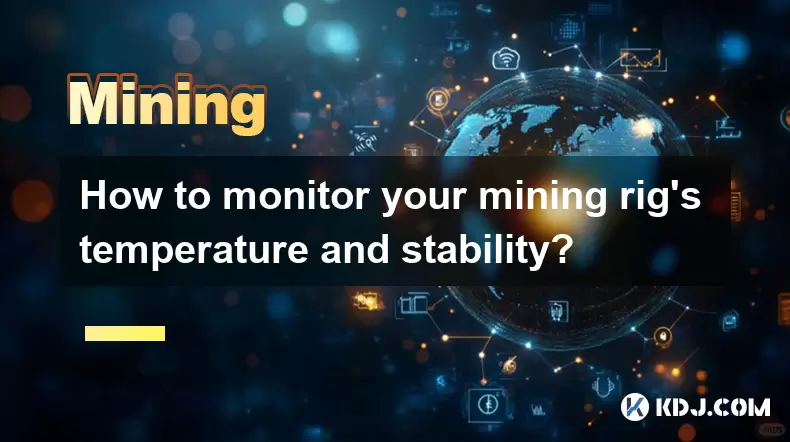-
 Bitcoin
Bitcoin $116400
-0.36% -
 Ethereum
Ethereum $4033
3.40% -
 XRP
XRP $3.302
-1.26% -
 Tether USDt
Tether USDt $1.000
-0.02% -
 BNB
BNB $796.1
1.67% -
 Solana
Solana $177.8
1.89% -
 USDC
USDC $0.9999
0.00% -
 Dogecoin
Dogecoin $0.2314
4.09% -
 TRON
TRON $0.3381
0.14% -
 Cardano
Cardano $0.7989
1.22% -
 Stellar
Stellar $0.4496
-1.84% -
 Chainlink
Chainlink $20.42
9.42% -
 Hyperliquid
Hyperliquid $41.17
0.88% -
 Sui
Sui $3.914
3.77% -
 Bitcoin Cash
Bitcoin Cash $584.7
1.52% -
 Hedera
Hedera $0.2632
-0.54% -
 Avalanche
Avalanche $24.09
3.40% -
 Ethena USDe
Ethena USDe $1.001
-0.02% -
 Litecoin
Litecoin $123.2
1.33% -
 Toncoin
Toncoin $3.318
-0.04% -
 UNUS SED LEO
UNUS SED LEO $8.984
-0.05% -
 Shiba Inu
Shiba Inu $0.00001323
2.85% -
 Uniswap
Uniswap $10.90
4.41% -
 Polkadot
Polkadot $3.999
3.34% -
 Dai
Dai $1.000
0.01% -
 Cronos
Cronos $0.1630
9.64% -
 Bitget Token
Bitget Token $4.484
0.82% -
 Monero
Monero $272.4
2.44% -
 Pepe
Pepe $0.00001173
6.03% -
 Aave
Aave $290.8
2.88%
What are the basic principles of Bitcoin mining?
Miners play a crucial role in the Bitcoin network by verifying transactions and securing the blockchain, ensuring the integrity and resilience of the decentralized digital currency.
Feb 25, 2025 at 09:24 am

Key Points:
- Understanding the concept of Bitcoin mining
- Role of miners in the Bitcoin network
- Technical steps involved in Bitcoin mining
- Factors influencing mining profitability
- Environmental implications of Bitcoin mining
- Regulation and legal aspects of Bitcoin mining
- Impact of mining on the Bitcoin ecosystem
What is Bitcoin Mining?
Bitcoin mining is the process of verifying and adding Bitcoin transactions to the blockchain, a public ledger that records all Bitcoin transactions. Miners use specialized computer hardware to solve complex mathematical problems that validate transactions and earn Bitcoin rewards as compensation.
Role of Miners in the Bitcoin Network:
Miners play a crucial role in the Bitcoin network by:
- Securing the network: Solving mathematical problems adds difficulty to the mining process, making it challenging for malicious actors to compromise the network.
- Processing transactions: Miners verify transactions and add them to the blockchain, ensuring the integrity and reliability of the network.
- Creating new Bitcoins: Miners earn newly created Bitcoins as block rewards for successfully validating transactions.
Technical Steps Involved in Bitcoin Mining:
- Hardware selection: Miners need specialized computer hardware, such as ASICs (Application-Specific Integrated Circuits) or GPUs (Graphics Processing Units), designed for efficient Bitcoin mining.
- Joining a mining pool: Most miners join mining pools where they combine their computing power to increase their chances of finding a block and earning rewards.
- Solving the mining algorithm: Miners solve a complex mathematical puzzle known as proof-of-work to validate blocks of transactions.
- Adding blocks to the blockchain: Successful miners broadcast their solutions, called blocks, to the network and receive Bitcoin rewards.
Factors Influencing Mining Profitability:
- Hardware efficiency: More efficient hardware, such as ASICs, can increase mining profitability by solving problems more quickly.
- Mining pool fees: Mining pools may charge small fees for their services, which can impact profitability.
- Bitcoin price: The value of Bitcoin directly affects the potential profitability of mining.
- Competition: The number of miners competing for block rewards affects the difficulty of finding blocks and the potential profitability.
Environmental Implications of Bitcoin Mining:
Bitcoin mining requires significant amounts of energy consumption, which has raised environmental concerns. Efforts are being made to use renewable energy sources and improve mining efficiency to mitigate this impact.
Regulation and Legal Aspects of Bitcoin Mining:
Mining regulations vary across jurisdictions. Some countries have specific laws addressing Bitcoin mining, while others treat it as a form of computer activity. Legal compliance is essential to avoid potential legal issues.
Impact of Mining on the Bitcoin Ecosystem:
Mining plays a significant role in sustaining the Bitcoin ecosystem by:
- Maintaining network security: Miners enforce the rules of the Bitcoin protocol, ensuring the network's resilience.
- Promoting decentralization: Mining is dispersed across a global network of miners, preventing any single entity from controlling the network.
- Distributing new Bitcoins: Mining rewards incentivize miners to maintain and secure the network, contributing to the growth and stability of the ecosystem.
FAQs:
1. What is the reward for successfully mining a block?
Currently, the reward for mining a block is 6.25 Bitcoins. However, this reward is halved every four years through a process called the Bitcoin halving.
2. Is it still profitable to mine Bitcoin?
Profitability depends on various factors, including hardware efficiency, electricity costs, and the price of Bitcoin. While mining can be profitable, it requires careful consideration of these factors.
3. What are the different types of Bitcoin mining hardware?
The most common types of Bitcoin mining hardware are ASICs and GPUs. ASICs are specialized chips designed specifically for mining, while GPUs are typically used for graphics rendering but can also be used for mining.
4. How does mining contribute to the security of the Bitcoin network?
Solving the proof-of-work algorithm requires significant computational power, making it difficult for malicious actors to control the network or double-spend Bitcoins.
5. What are the environmental concerns associated with Bitcoin mining?
Bitcoin mining consumes a large amount of energy, which can contribute to greenhouse gas emissions. However, steps are being taken to improve energy efficiency and adopt renewable energy sources for mining.
Disclaimer:info@kdj.com
The information provided is not trading advice. kdj.com does not assume any responsibility for any investments made based on the information provided in this article. Cryptocurrencies are highly volatile and it is highly recommended that you invest with caution after thorough research!
If you believe that the content used on this website infringes your copyright, please contact us immediately (info@kdj.com) and we will delete it promptly.
- Moat Stocks & Mega-Cap Momentum: July's Standout Performance
- 2025-08-09 12:30:12
- Injective (INJ) Eyes $15.39 Breakout Amidst Explosive Network Growth
- 2025-08-09 12:30:12
- Ripple vs. SEC: XRP Price Soars as Legal Battles End, But Can It Outpace Rising Competitors?
- 2025-08-09 13:10:12
- DWP Management, XRP, and Digital Asset Funds: A New Era for Institutional Investment?
- 2025-08-09 13:30:12
- Pi Network's KYB Verification: A Leap Towards Sustainable Token Launch
- 2025-08-09 13:30:12
- Bitcoin, Dollar Alternative, and Institutional Adoption: A New Era?
- 2025-08-09 13:35:12
Related knowledge

What is "proof-of-work" and how does it relate to mining?
Aug 07,2025 at 02:03pm
Understanding the Concept of Proof-of-WorkProof-of-work (PoW) is a consensus mechanism used in blockchain networks to validate transactions and secure...

What are the differences between mining on Windows vs. Linux?
Aug 06,2025 at 11:29pm
Overview of Cryptocurrency Mining PlatformsCryptocurrency mining involves using computational power to solve complex cryptographic puzzles and validat...

How to use an old computer for cryptocurrency mining?
Aug 07,2025 at 12:42pm
Understanding the Feasibility of Using an Old Computer for MiningUsing an old computer for cryptocurrency mining may seem outdated, but it is still te...

Can you mine cryptocurrency using solar power?
Aug 07,2025 at 12:00am
Understanding the Basics of Cryptocurrency MiningCryptocurrency mining involves validating transactions on a blockchain network by solving complex cry...

How to monitor your mining rig's temperature and stability?
Aug 09,2025 at 09:43am
Understanding the Importance of Temperature Monitoring in Mining RigsMaintaining optimal temperature levels in a mining rig is essential for long-term...

How to build a mining rig inside a PC case?
Aug 06,2025 at 11:01pm
Understanding the Basics of a Mining Rig in a PC CaseBuilding a mining rig inside a PC case involves transforming a standard computer chassis into a d...

What is "proof-of-work" and how does it relate to mining?
Aug 07,2025 at 02:03pm
Understanding the Concept of Proof-of-WorkProof-of-work (PoW) is a consensus mechanism used in blockchain networks to validate transactions and secure...

What are the differences between mining on Windows vs. Linux?
Aug 06,2025 at 11:29pm
Overview of Cryptocurrency Mining PlatformsCryptocurrency mining involves using computational power to solve complex cryptographic puzzles and validat...

How to use an old computer for cryptocurrency mining?
Aug 07,2025 at 12:42pm
Understanding the Feasibility of Using an Old Computer for MiningUsing an old computer for cryptocurrency mining may seem outdated, but it is still te...

Can you mine cryptocurrency using solar power?
Aug 07,2025 at 12:00am
Understanding the Basics of Cryptocurrency MiningCryptocurrency mining involves validating transactions on a blockchain network by solving complex cry...

How to monitor your mining rig's temperature and stability?
Aug 09,2025 at 09:43am
Understanding the Importance of Temperature Monitoring in Mining RigsMaintaining optimal temperature levels in a mining rig is essential for long-term...

How to build a mining rig inside a PC case?
Aug 06,2025 at 11:01pm
Understanding the Basics of a Mining Rig in a PC CaseBuilding a mining rig inside a PC case involves transforming a standard computer chassis into a d...
See all articles

























































































